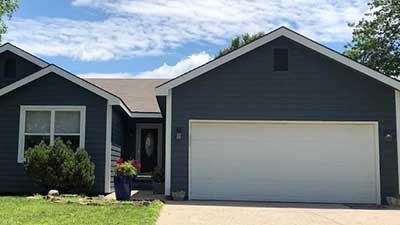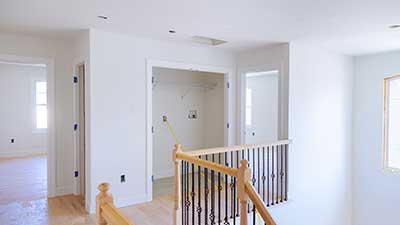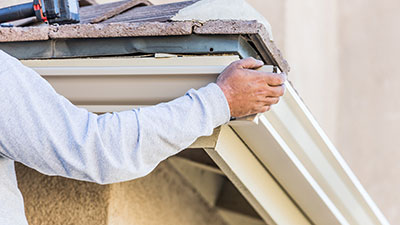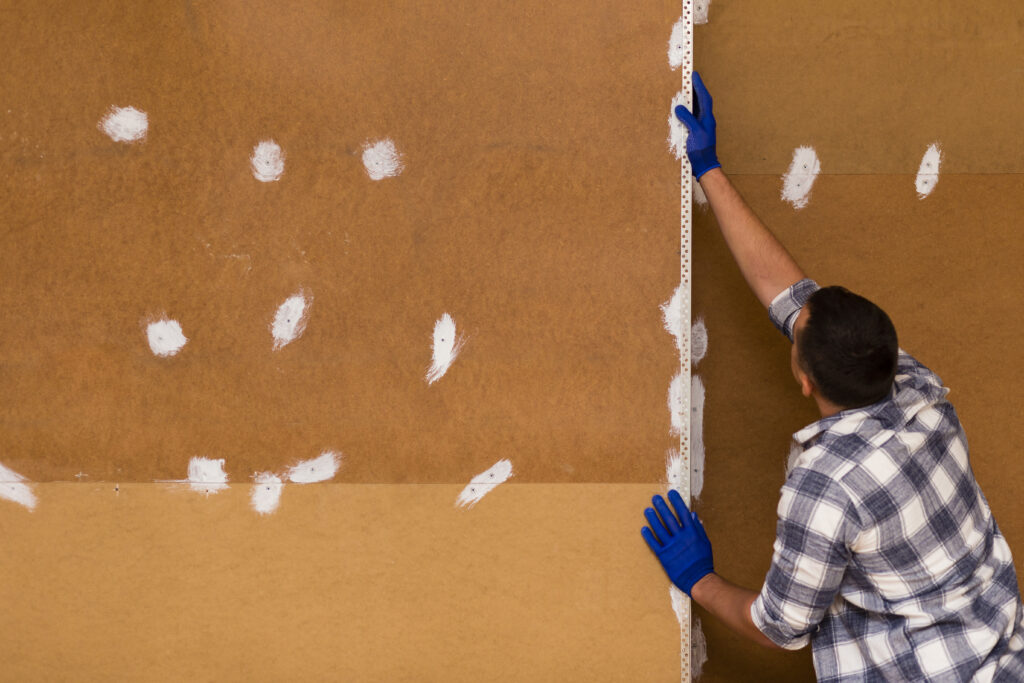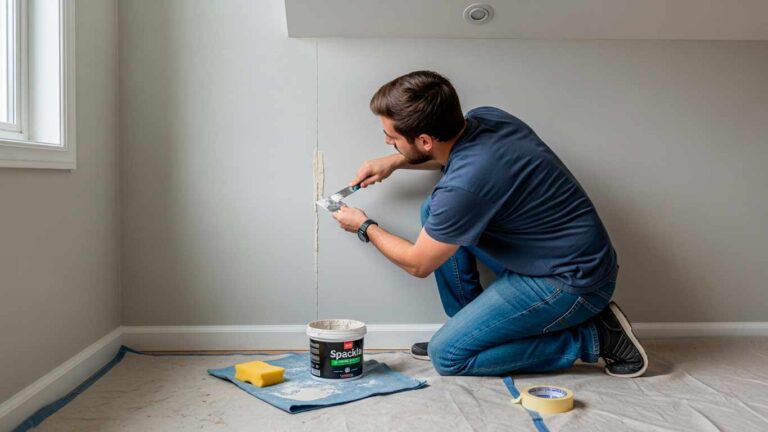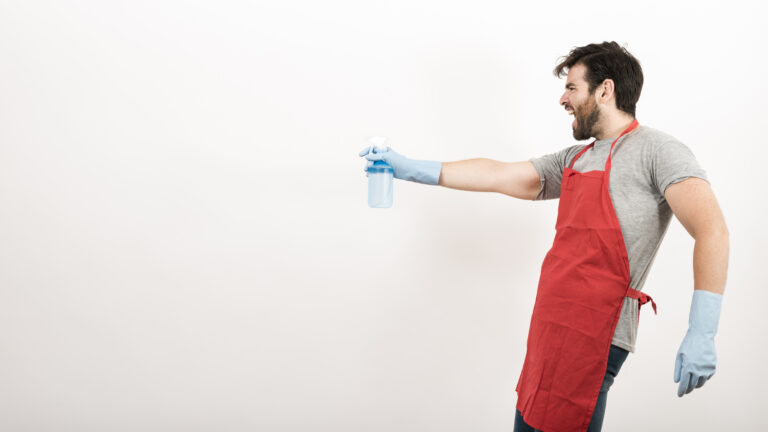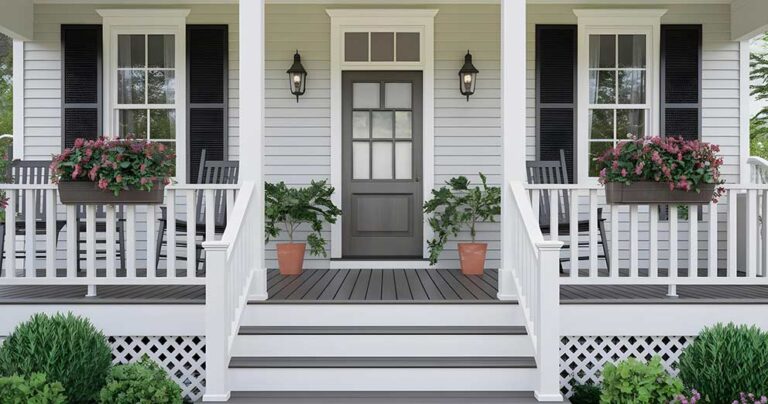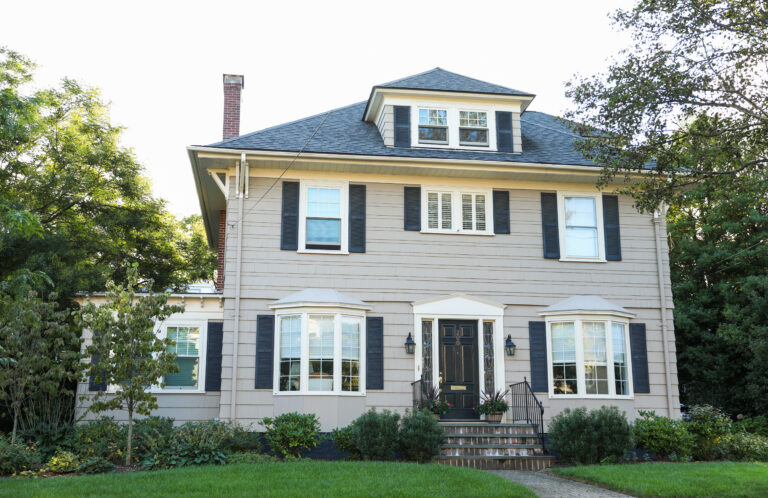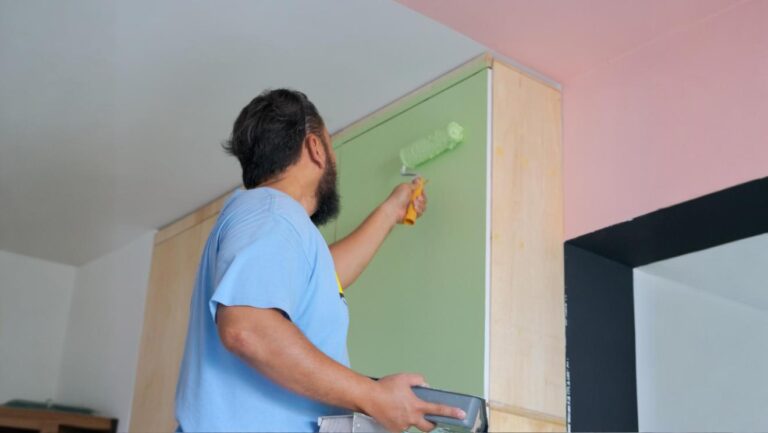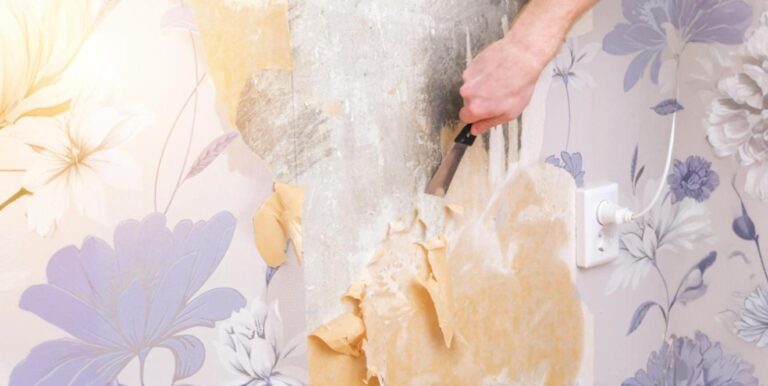Covering up a drywall patch with paint? No sweat. It’s way simpler than it sounds, and it’s all about making your wall look untouched again. Whether you’re fixing up after some bumps or just refreshing the scene, hiding those patches is your ticket to a slick finish.
We’ll walk you through getting your wall ready, choosing the perfect paint, and applying it so smoothly, you’ll wonder where the patch went. By sticking to a couple of easy steps, you’re going to nail a look that’s as good as any pro’s.
Ready to make those patches vanish? Let’s get started on transforming those patched areas into invisible, flawless finishes on your entire wall.
Key Takeaways
- Use fine grit sandpaper and lightweight joint compound for smooth patch preparation.
- Small holes need only spackling compound, while larger repairs require the California Patch method.
- Always prime patches before painting to prevent flashing, especially with high gloss paints.
- Apply multiple thin coats using feathering technique for seamless blending.
- OnDemand Painters recommends spot priming to save time while maintaining professional results.
- Plan for a second coat when patching compound creates texture differences requiring utility knife precision.
- OnDemand Painters delivers spot priming and professional application techniques for a spotless finish without the DIY hassle.
Understanding How to Paint a Drywall Patch
Drywall patches are a must-have for fixing parts of drywall damaged by things like holes, cracks, water issues, or dents. Putting in a drywall patch not only fixes the wall but also keeps it looking good.
A self-adhesive mesh patch can be particularly useful for quick repairs after plumbing or electrical work.
Common Types of Drywall Damage
Popped nail heads occur when fasteners back out of wall studs, creating visible bumps that need countersinking and filling.
Water damage from plumbing leaks or roof issues requires immediate attention to prevent mold growth. Corner bead damage occurs at wall intersections where metal or vinyl strips protect drywall edges.
Accidental punctures from furniture or equipment create irregular holes that need custom patch sizing.
Different Patch Sizes and Methods
Small holes under 2 inches typically need only fast-drying spackling compound and basic smoothing techniques.
Medium holes from 2-6 inches work best with the California Patch method, which involves cutting a drywall piece slightly larger than the damage and securing it from behind.
Large holes over 6 inches require furring strips or wall stud attachment for proper structural support. This method ensures the patch won’t sag or crack over time.
Corner bead repairs need specialized techniques since they involve both drywall compound and metal or vinyl corner pieces.
Selecting the Right Materials for Drywall Patches
Choosing the right materials, such as joint compound and paint, is crucial for a successful drywall repair.
Primer: A high-quality primer suitable for drywall or a high-build primer to fill any wall texture differences is essential.
Paint: Matching the existing paint on the surrounding wall ensures that the painted wall looks uniform.
Essential Repair Materials
Joint compound comes in different formulations – lightweight for easy sanding, all-purpose for general repairs, and setting-type for structural fixes. Self-adhesive mesh patches work perfectly for small to medium holes.
Fast-drying spackling compound saves time on minor repairs and nail holes. Construction adhesive provides extra holding power for larger patches.
Furring strips create backing support for substantial repairs where wall studs aren’t accessible.
Safety Equipment and Considerations
Always wear protective clothing including work gloves to prevent cuts from sharp drywall edges. Safety glasses protect your eyes from dust and debris during sanding.
Dust masks are essential when working with joint compound and during the sanding process. Fine drywall particles can irritate respiratory systems.
Use a stud finder to locate wall studs before cutting or drilling. This prevents damage to electrical wiring typically attached to structural framing.
Techniques for Painting Drywall Patches
For a painting process that blends seamlessly with the rest of the wall surface, proper technique is everything.
Use a wall texture spray and a small roller to apply paint in a way that matches the wall’s texture. Apply primer and paint in thin, even coats.
Feather the edges of the paint to blend the entire patch with the surrounding wall surface, achieving a smooth finish.
Surface Preparation
Start with proper sanding using varying grits to gradually achieve a perfectly smooth finish. Skim coating involves applying thin layers of joint compound to create uniform surface texture.
Clean the wall surface thoroughly after sanding. A tack cloth picks up fine particles more effectively than regular rags.
Texture Matching Techniques
Orange peel texture is the most common wall finish, created by rolling paint with medium-nap rollers. Study your existing wall pattern before attempting to replicate it.
Wall texture spray application requires practice but produces consistent results for larger repair areas. Hold the sprayer at consistent distances and overlap passes slightly.
Matching existing wall patterns often means examining brush strokes, roller marks, or spray patterns used in the original application.
Primer Application
Spot priming focuses primer application only on repaired areas rather than entire walls. This saves time and materials while ensuring proper paint adhesion.
High-build primer helps fill minor surface imperfections and creates uniform texture. Allow proper drying time as per manufacturer’s instructions.
Paint Application
Feathering technique involves gradually thinning paint edges beyond the patch boundaries. This creates seamless transitions between new and existing paint.
Multiple thin coats provide better coverage and texture matching than single thick applications. Each coat should dry completely before applying the next.
Tools, Equipment, and Techniques for Drywall Patch Painting
Essential Tools and Equipment for Preparing and Painting a Drywall Patch
To achieve a professional-quality paint job on a drywall patch, having the right tools and equipment is crucial. Here is an expanded list of essentials:
Sandpaper or a Sanding Block: Necessary for creating a smooth surface on the drywall patch. Use varying grits to gradually achieve a perfectly smooth finish.
Tack Cloth or Damp Rag: These are used for cleaning the wall surface after sanding, ensuring it’s free of loose debris and dust. A tack cloth is especially effective at picking up fine particles.
Drywall Primer: A high-quality primer is essential for sealing the wall surface and ensuring uniform paint absorption.
Essential Tools
Drywall saw and utility knife handle cutting tasks for patch preparation. Sharp blades ensure clean cuts without fraying drywall paper.
Putty knife and taping knives in various sizes (4-inch, 6-inch, 8-inch) allow proper compound application and smoothing.
Sanding blocks and sanding screens provide better control than loose sandpaper. Different grits handle various smoothing stages.
Stud finder prevents accidental damage to electrical wiring hidden behind walls.
Equipment Setup
Paintbrushes and Rollers: Choose brushes and rollers based on the texture of your existing wall surface. A small roller can help achieve a texture similar to that of the rest of the wall surface.
Paint Tray: For holding and rolling out paint and primer.
Drop Cloths or Plastic Sheeting: These materials protect the floor and furniture from paint spills and splatters.
Step-by-Step Application Process
Preparation Steps
Begin by ensuring the patched area is completely dry and properly sanded. Remove all dust and debris with a tack cloth.
Check that any popped nail heads are properly countersunk and filled with compound.
Primer Application
After applying primer, allow it to dry thoroughly as per the manufacturer’s instructions. This is critical for paint adhesion and a smooth finish.
Spot priming saves materials while ensuring adequate surface sealing. Extend primer slightly beyond patch boundaries for proper blending.
Paint Application
Apply paint in multiple thin coats rather than a single thick one. This technique allows for better control over the painting process and reduces the risk of drips or texture differences.
Ensure each coat has adequate drying time as recommended.
Blending the Patch with the Existing Wall
Feathering the edges of both paint and primer beyond the patch helps integrate the repair into the existing wall surface. This technique softens the transition between the entire patch and the surrounding paint.
Replicating the original wall’s painting method (whether using a roller or brush) is crucial for matching the texture and ensuring the patch blends seamlessly.
Troubleshooting Common Problems
Paint Absorption Issues
Flashing occurs when patches absorb paint differently than surrounding walls, creating visible sheen differences. Proper primer application prevents this common problem.
Uneven absorption happens when the joint compound isn’t properly sealed. Always use primer designed for new drywall or porous surfaces.
Texture and Color Matching
Color variations can result from paint aging, lighting differences, or improper mixing. Stir paint thoroughly and consider tinted primer for better coverage.
Texture differences become obvious under certain lighting conditions. Practice texture techniques on scrap material before applying to walls.
Moisture and Adhesion Problems
Moisture damage requires complete drying before repairs begin. Use fans or dehumidifiers to ensure proper conditions.
Poor adhesion often results from contaminated surfaces or inadequate primer application. Clean surfaces thoroughly and allow proper curing time.
Common Mistakes to Avoid
Skipping primer: This can lead to uneven paint absorption and color mismatch.
Applying thick coats of paint: Results in visible seams or ridges.
Insufficient drying time between coats: Can lead to sags or bubbles in the painting process.
Rushing the sanding process creates visible imperfections that show through paint layers.
Using wrong brush or roller types can create texture mismatches with existing wall surfaces.
Post-Painting Care
Avoid cleaning the painted wall for at least two weeks to let the new paint fully cure. When it’s time to clean, opt for mild cleaning agents and soft cloths to ensure the paint finish remains undamaged.
Protect repaired areas from impact damage during the curing period. Heavy furniture contact can leave permanent marks on fresh paint.
Environmental Factors and Timing
Humidity levels affect drying times and paint adhesion. Ideal conditions include 40-60% humidity and temperatures between 65-75°F.
High humidity slows drying and can cause paint to remain tacky longer than expected. Use dehumidifiers in problem areas.
Temperature extremes affect paint flow and leveling. Avoid painting in direct sunlight or during temperature fluctuations.
Seasonal timing matters – spring and fall typically provide optimal conditions for interior painting projects.
Conclusion
Patching drywall is an essential skill in your home maintenance toolkit. It’s about properly repairing wall damage before applying a fresh coat of paint, ensuring everything looks professionally finished.
The process becomes more effective when you focus on repairing damage to the drywall surface before painting. Achieving that seamless painted surface isn’t just aesthetically pleasing; it’s what distinguishes amateur work from professional results.
With this knowledge, you can confidently tackle the preparation of that damaged area, select the right tools for the job, and master the techniques for smooth application. Ultimately, it’s about making those walls look like the damage never occurred.
FAQs
What is the California Patch method?
The California Patch method works perfectly for medium-sized holes (2-6 inches). Cut a drywall piece 2 inches larger than the hole, score the back, and remove excess material leaving only the face paper. Apply joint compound to the wall, press the patch in place, and the paper creates a seamless bond.
How do I prevent flashing when painting over patches?
Flashing happens when patches absorb paint differently than surrounding walls. Always use proper primer designed for new drywall, apply it beyond patch boundaries, and ensure complete coverage. Quality primer creates uniform surface porosity.
Do I need to prime every drywall patch?
Yes, primer is essential for every patch regardless of size. Joint compound and drywall paper absorb paint differently than painted surfaces. Spot priming saves time and materials while ensuring proper paint adhesion and color matching.
How do I match orange peel texture on my walls?
Orange peel texture requires medium-nap rollers and proper paint consistency. Practice on cardboard first – roll in overlapping W patterns, then cross-roll lightly. Wall texture spray offers more consistent results for larger areas but requires practice and proper equipment.
What’s the best way to repair small holes in drywall?
For small holes and screw holes, apply patching compound directly, smooth with a putty knife, then sand with fine grit sandpaper once dry.
When should I apply a second coat of paint over patches?
Apply a second coat when texture differences remain visible, especially with high gloss paints that highlight imperfections in lightweight joint compound repairs.







